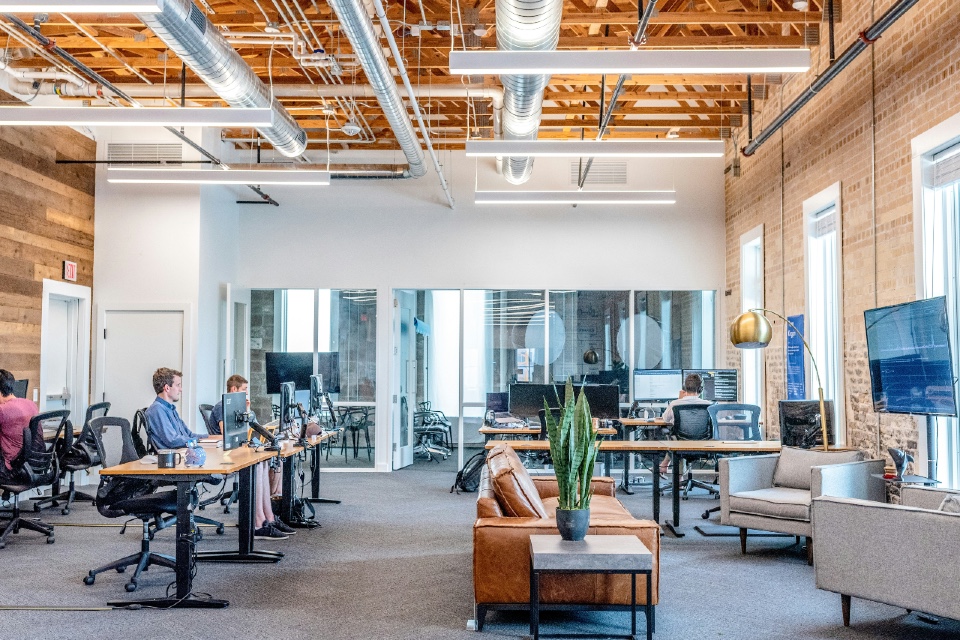All workers in the UK are protected by health, safety, and employment laws. However, individuals with disabilities or long-term conditions often require extra support. Like many others, respiratory conditions aren’t visible and vary in symptoms and severity which can make navigating them at work difficult. That’s why employers are required to make ‘reasonable adjustments’ to cater to an employee’s individual needs.
At times overlooked, creating environments that support the well-being of all employees is essential to workplace functionality. In the following guide, office interior design experts Diamond Interiors have put together a set of steps to creating an accessible workplace aiding those with respiratory conditions…
Common forms of respiratory illness
Firstly, there are many different types of respiratory illnesses and diseases, that usually fall within three categories:
- Restrictive lung diseases such as pulmonary fibrosis are characterised by inflammation and scarring making breathing difficult.
- Obstructive lung diseases such as asthma are when airways narrow making it difficult to breathe in and out, creating shortness of breath.
- Pulmonary vascular lung diseases such as pulmonary arterial hypertension (PAH). are caused by dysfunctional heart-lung blood vessels, leading to shortness of breath and low tolerance to physical activity.
The symptoms experienced by each individual will vary, this is why adapting to each employee through reasonable adjustments is key. Here is how you can create a work environment that supports the well-being of all employees.
Step 1 – Understanding different needs
The first step to workplace accessibility is actually not physical adaptations, but ensuring that there is open communication. Although employees don’t have to let their employer know about their disability, if they would like support, ensure that their needs are met and that accessible office design can actively assist them.
Step 2 – Workplace adjustments
In some cases the physical features of a building may be more difficult to change such as steps or stairs, or the width of paths and doors; however, there are other adjustments that are more likely to be attainable. It is important to get an understanding of the ways each employee would like assistance and to focus on those areas. Here are some reasonable adjustments to consider:
Ease of accessibility
Providing ramps and stair lifts for facilitated movement within the building and office space.
Ventilation
Installing the correct ventilation to ensure maximum comfort and respiratory ability in the office.
Rest spaces
Creating rest spaces to ensure areas where people can rest and catch their breath. Go for ergonomic furniture that can be moved around and easily arranged for extra practicality and adaptability.
Step 3 – Trigger Management
Some respiratory illnesses and diseases are triggered by different things such as allergens, aerosols, or air temperature. The right design choices can mitigate common triggers for respiratory conditions. The most common triggers are:
- Aerosols
- Scented products
- Harsh chemicals
- Second-hand smoke
- Air temperature warm or cold
- Pests
- Mould
- Manufactured ventilation
- Dust
- Vehicle exhausts
To reduce the possibility of these triggers you can do things such as selecting hypoallergenic materials, implementing proper ventilation systems, and controlling indoor air quality through strategic placement of plants and air purifiers.
Step 4 – Lung-friendly workplace design
Another consideration when adapting your workplace to being lung accessible is the workplace design and furnishings within it. Office layout and furnishings can play a big part in minimising dust and allergen accumulation, promoting airflow, and creating a clean and healthy indoor environment. As many triggers can be found in furnishings around the workplace. Here is what you should consider:
Paints
When considering colours, opt for low-VOC paints and finishes which give off a lesser amount of gases, as these are less likely to be an irritant and become a trigger.
Windows
Windows that can be opened are great for allowing sunlight to enter the room and fresh air to filter in, promoting airflow, and a clean and healthy indoor environment. When furnishing windows, replace curtains with vertical or roller blinds which are easier to clean and collect less dust.
Flooring
Avoid carpets where possible, but if choosing a carpet, select a short pile or loop carpet, as their fibres filter the air which reduces airborne dust and particles. Alternatively, nylon carpets can repel allergens whereas nylon solution-dyed carpets can reduce certain triggers such as mould and mildew.
Heating and cooling
When incorporating heating and cooling methods into the office space, opt for electric heating methods such as panel heaters, radiant heaters and hydronic heaters as they don’t emit or circulate smoke, gases or dust.
Fabric choices
Fabric choices are one of the most important decisions for respiratory accessibility. When choosing upholstered furniture for your workspace, you need to be mindful of the materials used in order to minimise the trapping of dust and pollen.
There are four types of materials that have allergen-barrier encasings such as woven microfiber fabrics and non-woven microfiber fabrics, but as a general rule, try to use fabric types and furniture that can be wiped clean
Plants
Plants are great for air filtering and producing oxygen, placing plants strategically and sparingly will provide the most benefit to the office environment.
Finishing touches
One last element to respiratory accessible office design is avoiding open shelving units, an excess of objects or clutter that can collect dust. Especially in high-up or hard-to-reach areas which makes maintenance difficult.
Step 5 – Condition Management
There are some proactive measures that can be taken to ensure that any employee’s conditions are managed correctly which could include:
- Regular rubbish disposal.
- Implementing a tobacco-free policy.
- Using fragrance-free products in the workplace.
- Installing proper ventilation.
- A no sickness-in-the-office policy to protect vulnerable employees.
- Keeping office temperatures at a base temperature.
- Having someone trained in first-aid and respiratory condition management.
Step 6 – Employee training
The last but not the least important step is employing training to ensure that protocol is followed. One or more employees can be designated to undergo inclusion and diversity, and disability training to ensure that the workplace becomes and remains a more inclusive and accessible environment.
Finally, this individual will also be able to keep a copy of an employee’s self-management plan, which can help in case of any symptoms or flare-ups, and allow for extra reassurance knowing that there are people around who are there to help.
Final thoughts
Prioritising respiratory accessibility in workplace design is essential for supporting the well-being of employees, especially those with respiratory conditions. Through proactive measures and by implementing these changes, we can ensure a safe and inviting workspace for everyone.
Photo by Austin Distel on Unsplash





